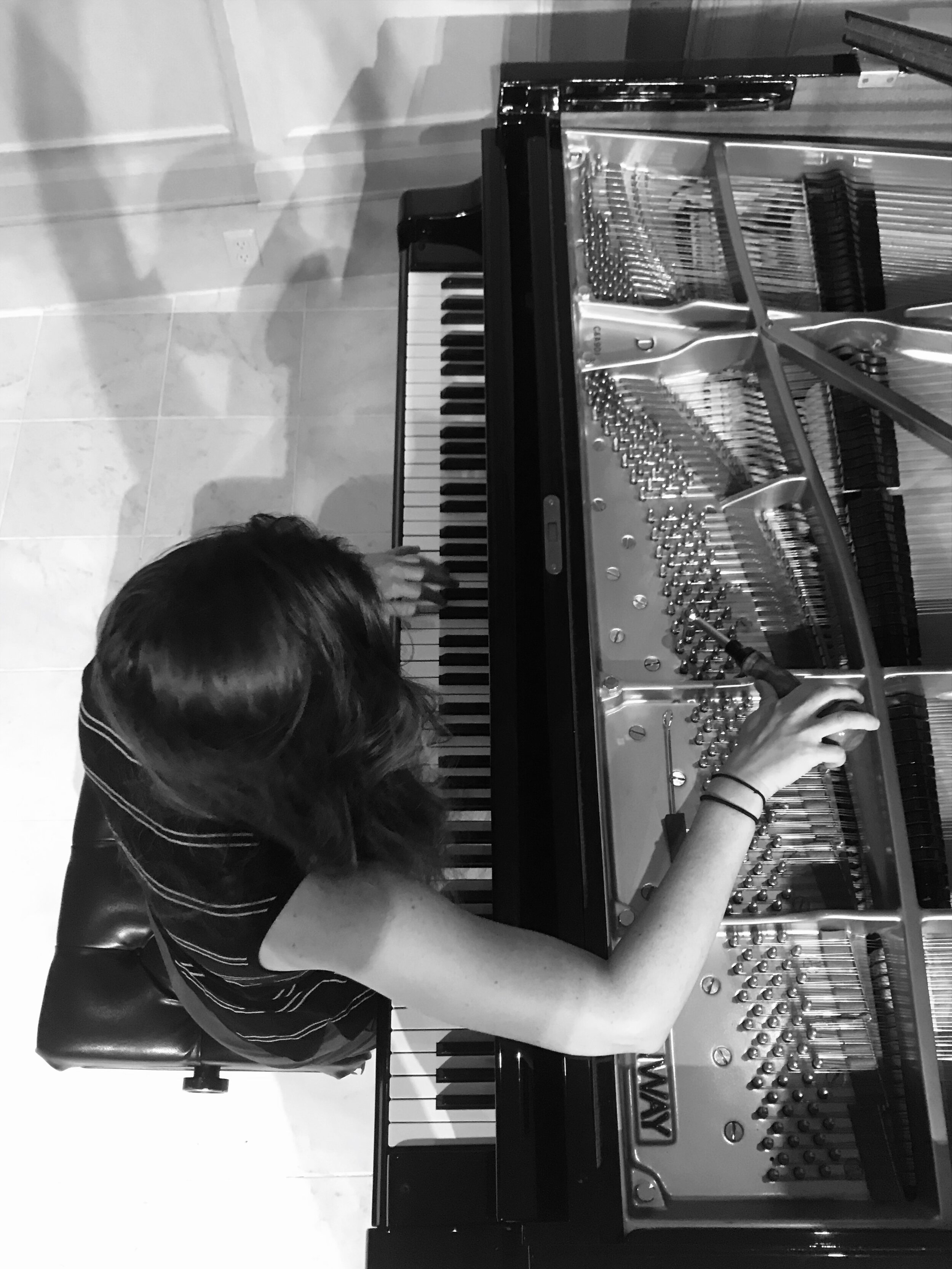Skye Meadows Jenkins is a Piano Technician based in Seattle, Washington

Skye Meadows Jenkins is a Piano Technician based in Seattle, Washington


The quality, shape, and compactness of the hammer’s felt as it hits the piano wire has a profound effect on your piano’s tone. After many hours of playing, the hammer develops grooves where the felt has compacted after hitting the strings thousands of times. This changes the piano’s tone much in the same way changing the mallet on a marimba changes the tone. The harder felt causes a more metallic, shrill tone with more prominent high partials. When the felt is reshaped and the softer layers of felt revealed, a rounder warmer sound results.
The way the hammer travels to the string is also very important to the tone as well as the playability, and can cause problems in the instrument if not maintained over time. The hammer should strike all 3 strings simultaneously and completely without swinging to one side or the other as it approaches the strings in order to achieve the best piano tone.


Sometimes individual notes or sections of notes need to be “voiced up” or made brighter or “voiced down” or made more mellow. This can be achieved with a variety of techniques in which a needle or several are inserted at various points in the hammer or with a variety of chemical solutions that may be applied to the hammer to facilitate a brighter or mellower tone.